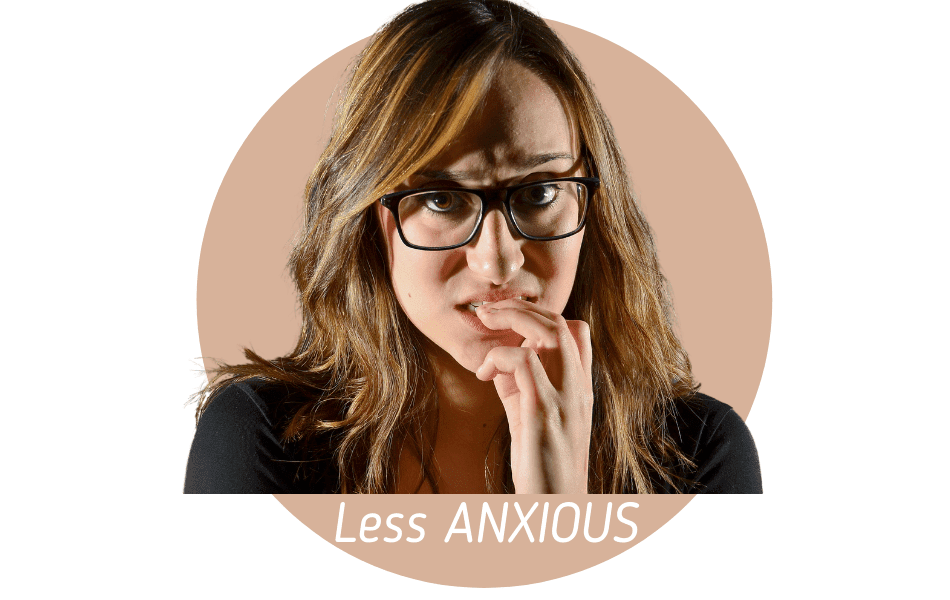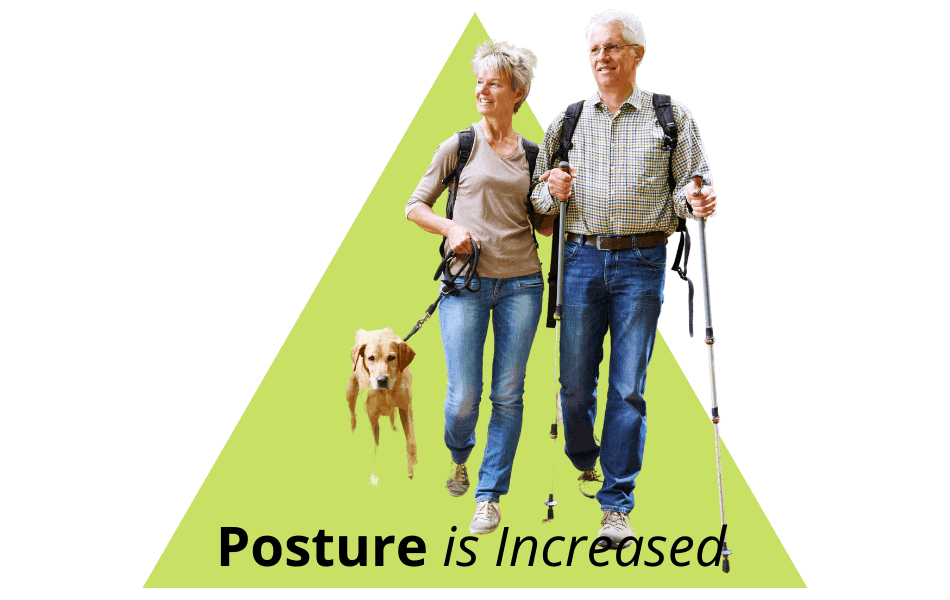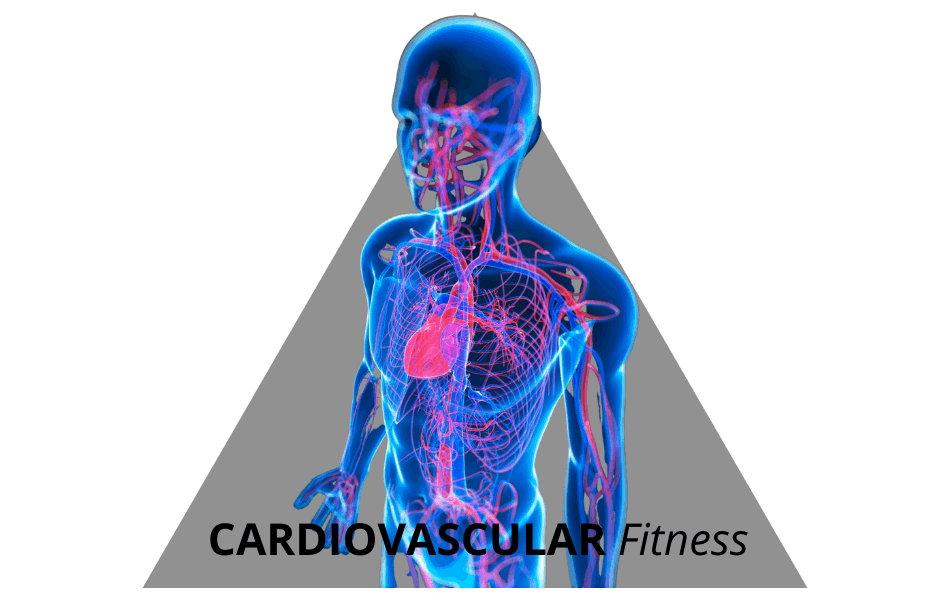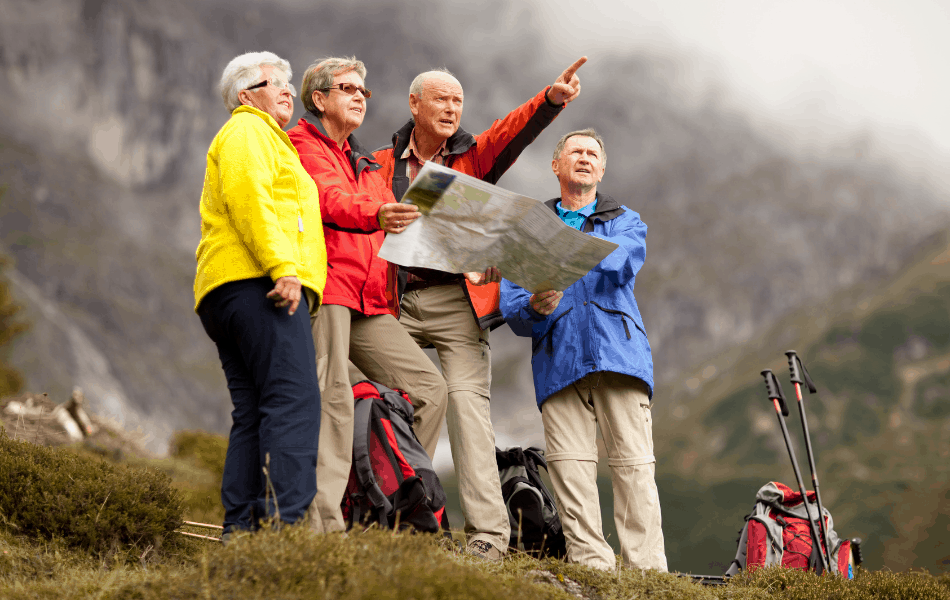Hiking comprises vigorous or slow walks on footpaths or trails, on mountainous or scenic terrain. Considerable distances are normally covered.
Content
- What makes a hike a hike?
- There are different levels of hiking
- Does Hiking have a History?
- Invaluable Benefits you will gain from hiking
- 8 Mental Benefits of Hiking as an Older Adult
- 6 Physical Benefits of Hiking as an Older Adult
- When does Hiking get Easier?
- How do you prevent and avoid blisters?
- Why do hikers stack rocks?
- 16 Tips of what NOT to do while hiking
- 9 Points to take note of Before and During the Hike
Hikes are taken part by hikers to undergo the exercise and beauty of nature, bird or wildlife watching and feeling of wellness. Solo to groups, clubs or hiking tours for a day, week or longer occur depending on your preference. Today, hiking can be regarded as a sport, therefore some hiking tours for seniors require a health test prior to attendance.
What makes a hike a hike?
Are you wondering as an older adult IF you should start hiking? Of course, the answer is YES!
People all over the world define hiking differently, but there are some common points all around. When you are going out for a walk, you are walking on a flat, hard surface with an incline or decline here and there and normally some obstructions are in the way.
Hiking occurs offroad on gravel roads, footpaths up mountains, alongside rivers or in forests and the length of the hike is longer than your normal walk and can occur for half a day, a full day or numerous days. Nature is your playing field and is more strenuous and requires you to be fitter. You don’t require any qualifications to hike, as long as you can walk. Your attire will need to be correct and required for the hike and other necessities.
There are different levels of hiking
The different levels of hiking are based on how strenuous the hike is so start out start at Level 1 and move upwards the more experienced and fitter you become. Tough hikes before you are ready for them will only make you suffer unnecessarily, with more difficult terrain types, including rocks to climb over or streams to cross covering a further distance.
Accompany a hike leader as he or she is familiar with the landscape you will be going through and has the knowledge of any issues which you may occur. Leaders will also be aware of your age so will not put you through something that you cannot cope with. Each level has different grades within that level. Most hikers travel at 3.22 km per hour on fairly flat services, allowing for an increase as you get fitter.
Level One
| Grade One – Beginner: This is rather like a stroll in the park. The terrain is pretty smooth and flat. Take a water bottle. Still wear good walking shoes that support your ankles. Most often dogs are welcome. | Start with Grade One. Even do a few times |
| Grade Two – Beginner: This is still fairly simple with a few more inclines. You do need your water bottle and good walking shoes. Dogs normally join the hike. | Before you move up, make sure you achieve this level comfortably. |
| Grade Three – Beginner: Walk a bit further, more inclines and declines, but not over strenuous. Dogs often are still permitted. | Do this level a few times until you are ready to move upwards. |
Level Two
| Grade Four – Moderate: The distance for a walk gets longer and the inclines get steeper | This level starts getting tougher, but achievable and no major experience in hiking required |
| Grade Five – Moderate: No beginners on this level, grade 5. Inclines and medium steep hills, steps and uneven footpaths | Here the hiking starts to get really exciting, so a good level to aim for. |
| Grade Six – Moderate: No beginners. Longer distances with more fitness are required, especially with steeper inclines and uneven paths. | Make sure your health and fitness levels are good for this stage. |
Level Three
| Grade Seven – Advanced: Numerous seniors go on these hikes, but not beginners. No dogs allowed. Longer distances and can be full-day hikes with greater inclines. Rough ground and inclines could be very steep. You need to be an experienced hiker. | This level is for the serious hiker. |
| Grade Eight – Advanced: You must be an experienced, serious hiker, and have the correct gear and equipment. Hikes are long and the terrain is tough but incredibly rewarding. You should be able to walk +/- 20 km in a day. | Most certainly for the practised hiker. |
| Grade Nine – Advanced: What a winner if you can achieve this level! You have to be a very skilled, practised and knowledgeable hiker. You have to be fitted out with all hiking equipment and gear (including your own navigation) and have all the skills and endurance. | Health, fitness, and dedication need to be a top priority. |
Does Hiking have a History?
Hiking does not really originate at any specific date, but during the Stone Age and thereafter, hiking was the only means for people to get around to hunt, move and visit others in different locations. Today, hiking is not classified as a sport as you are not competing against anyone, nor do you score any points. There are no set rule books as there are in a game of soccer or tennis.
Certain clubs do have their own rule books, but that is generally to keep you safe. During the 1900s, hiking started to become more of a recreation and hobby or enforced fitness exercise by armies. As time progressed, people wanted to hike, as their occupations had changed to more office-inclined jobs and developed transport so they were not walking as much as they used to, resulting in the perception of hiking becoming more of a pleasure, hobby and fitness pastime.
Invaluable Benefits you will gain from hiking
Age creeps on and as we become older adults, we start being aware of our health, both mental and physical, including a natural internal instinct to live longer. Especially after Covid-19, we want to keep ourselves healthy and feel as if we can travel and get out, but still keep our distance from others, outside.
8 Mental Benefits of Hiking as an Older Adult

1. Social Benefits
Hiking with others can create strong bonds between yourself and other people you hike with as jointly you are working hard towards a common goal. All are in the present moment, in beautiful surroundings, have tough challenges together, help one another over obstacles and have these common hours shared. Extraordinary friendships are now bound together and you will have a sense of belonging.

2. Become More Creative
Inspired by being in the company of nature, a trigger seems to burst from the right side of your brain unpredictively. Surprisingly at work or at home, your ideas spring forth, and you have more vision and motivation, exposing inspiration which seems to have been dormant for years and starting to come to fruition.

3. Become Less Anxious
Hiking due to its physical and psychological benefits reduces anxiety. During the hike, endorphins are released, which are the feel-good chemicals that affect neurotransmitters and you start feeling less anxious. Body temperature is also increased and this creates a sense of calm, changing your focus from anxiousness to action and beauty.

4. Improves Brain Power
This we most certainly would like! More brainpower and less memory loss! Often, if I am not hiking, my brain feels foggy, therefore I know I need to get out and hike more when I am getting more forgetful. Hiking helps prevent dementia and other cognitive diseases.

5. More Productive
Hiking enables you to be far more productive in everything you do and motivated to finish your goal, as it is a sense of meditation and due to that, you are able to have a greater attention span. Also, a critical factor is that while you are on a hike, you are “unplugged” from technology.

6. Less Suicidal
Depression and suicide become far more real the older we get. Maybe it is because we are lonely, feel aches and pains we never felt before, don’t see our family as much as we would like, overthink and experience an unworthiness in ourselves, but we can change this by starting to hike. Negative patterns of thought, self-doubt, and cogitation become habits of our daily lives. Your relationship with the world becomes far more positive when hiking.

7. Reduces Stress
Stress, oh me gosh, if only we could live in a world where we do not suffer and encounter stress! Hiking is a great stress level reducer! We bring stress upon ourselves, but through hiking, our stress dissipates and doesn’t seem to overpower us.

8. Improves Sleep Patterns
People who hike are able to have better health, including digestion and fully emptying the bladder prior to going to sleep. Insomnia is quite common in older adults, but with hiking and the effects, it has on the body, the ability to fall asleep increases and the 8 hours a night becomes a reality.
I love that moment in a hike when you snap to and suddenly realise for the last 10 minutes you’ve not been observing nature but have instead become a part of it.”
We Dream of Travel
6 Physical Benefits of Hiking as an Older Adult
Physical benefits of hiking as we get older can improve our lifestyle, lower our capacity for heart attacks, broken bones, dreaded diseases, weight gain, and muscle loss and increase the feeling of wellness all around.
1. Improved Posture
Do you know what the top cause of injury among older adults is? Losing your balance and falling. Do you find you are watching how you walk lately and feel unbalanced? You can do something about this. Hike! Hiking does strengthen your CORE muscles, which you need for stability to move in your hips, knees and ankles. For good balance, the muscles in your back, hips and abdomen need to be strengthened so your core is strong.

2. Cardiovascular Fitness
The fitter you get the healthier your heart gets. More oxygen is brought into your blood which is taken into your heart and lungs by your blood vessels. Hiking is fantastic for cardiovascular fitness as the older we get the less oxygen we get into our system and the more cardiovascular fitness we need if we want to stay healthy. Combat different heart diseases!

3. Muscle Strength
Muscle-building strength is increased strongly with hiking. As you are walking on uneven terrain, going up and down inclines, all parts of your body are working that build your muscle strength. The older we get the more we have to concern ourselves with osteoporosis and weakening of muscles, whereas with hiking our bones and muscles work together.

4. Disease Risk is Lowered
Your body works together like a machine, concurrently all parts need to be serviced regularly, maintained and cleaned. Eating healthily and hiking, are practical ways to do this thus the cardio works, oxygen is increased, muscles and bones oiled and expanded, lungs are given great exercise and reduced sugar levels. Experts say hiking can reduce type 2 diabetes, lung and colon cancer and many other illnesses.

5. Weight Loss
As women, this is always our best. It doesn’t matter what age we are, excessive weight is a pain to lose. Hiking is the “pill” to weight loss with a toned body form.

6. Lowers Cholesterol
Everyone has cholesterol and it is produced by the liver which is a type of fat found in your blood. Too much, your heart could get blocked and a surgeon needs to be called in. Hiking up and down inclines lowers your blood sugars and lowers the nasty cholesterol but also increases the “good” cholesterol.

“Hiking is not escapism; it’s realism. The people who choose to spend time outdoors are not running away from anything; we are returning to where we belong”
Jennifer Pharr Davis
When does Hiking get Easier?
Even though hiking is a phenomenal lifestyle, when you start, you need to prepare your body to do these hikes. Ask yourself how fit you are currently. Give yourself between two to nine weeks before you attempt to do the more adventurous hikes.
Start by doing brisk walks on fairly flat terrain, then move up to shorter hikes with little inclines. Increase the length of your short hikes with more inclines a little each week, so by the third week, place your backpack on your back and get used to carrying a backpack, then the next week add a few more things.
At home do a few exercises such as walking up and down stairs, skipping and core exercises. Include resistant bands in your workout and in your lunges. You do not have to be ultra-fit to hike, but there is a certain level of fitness you do need, remembering to get into shape ahead of time. The more you hike the easier the exercises and hiking will become.
| As we started a new life in a new country, and hiking became a daily occurrence, I started with Body by Jelena. Well, oh my gosh, Jelena is incredible, so patient and using methods to conquer areas of your body that you have not used for years and are proving to be a hindrance to your well-being. She sees exactly which part of your body needs you to work on, and the methodology that she uses is totally unique but logical. After each session, at her “gym” or online, I feel the results. Read my article Herceg Novi in Montenegro: living like a local and you will see Jelena’s contact details. |
How do you prevent and avoid blisters?
- Keep your feet dry as possible. Sweat and friction create the blister
- The socks you use must be the correct socks for hiking. Nylon and moisture-wicking socks are the best.
- Apply talcum powder to your feet prior to going on a hike.
- On the hike take petroleum and plasters. If you feel you are starting with a blister, stop, and treat it immediately.
- Wear your new hiking boots before going on a hike. Make sure they are comfortable and support your feet correctly.
Why do hikers stack rocks?
Stacked rocks are known as Cairns which means in Gaelic “heap of stones”. These rocks are placed along the trail while you are hiking to mark where you have come from and assist you in returning, so you do not get lost. Great idea don’t you think?
16 Tips of what NOT to do while hiking
I have recommended some gear which I find invaluable and hopefully will assist you too.
- Do not litter along the way.
- Avoid hiking alone or in the dark.
- Don’t overload your backpack.
- Be suspicious of strangers or camp or rest too long near roads.
- Do not hike in extreme temperatures.
- Wear the correct clothes, pants, tops and socks. Do not wear cotton but rather nylon or spandex which are quick drying. Socks are extremely important. I suggest these Women’s Hiking Socks, soft cushioned, arch support and reinforced at the toe and heel.
- Do not wear incorrect shoes. Shoes must have thick soles, so you do not feel rocky terrain as you walk, but soft and flexible. Your feet get hot, so the shoes must be able to breathe and if they get wet, they must be able to dry quickly. I find I have to have strong support around my ankles as I walk, otherwise, at the end of the hike, my ankles are sore. I love the brand SALOMON. To me personally, they are the best shoe made for walking or hiking. I would not change!
- Never go off your trail. This can be dangerous and if you get lost or hurt, it becomes a problem if someone needs to find you.
- Make sure you know what poison ivy looks like and do not touch it or what to do if you see a wild animal or snake.
- Do not play loud music! Keep the earphones out of your ears!
- Alcohol is a definite NO, NO on a hike.
- Smoking can affect your lungs as while hiking you will be breathing more deeply. Also, it is a hazard to the environment.
- Never eat wild fruits, mushrooms or any type of wild plant.
- Never go to the toilet or camp near a wild stream or river. Nor wash utensils near the stream. If you need water, take it away from the stream.
- Don’t take photos while you are walking. You could walk over the edge or into danger. Stop when everyone is resting, then take your photos. Nor do you rely on GPS for directions. Your signal will more than likely be lost. Have a physical map of the area.
- Never hide any “medical condition” from your hiking group.
9 Points to take note of Before and During the Hike
- Purchase trekking poles to help keep your balance and prevent ankle sprains. Starting out you do not need the most expensive, but these do assist with balance.
- Strengthen your lower leg muscles before hiking. This prevents sprained ankles.
- Do balance and core exercises to assist you with balance. The book 5-Minute Core Exercises for Seniors by Cindy Brehse is so worthwhile buying. It comes in paperback or kindle.
- Before going on a hike, let someone know where you are going and your plans.
- Take a medical aid kit with you on the hike, including an ankle guard, mosquito repellent, plasters, 4 bandages, half a roll of medical tape, tweezers, safety pins, gloves, antibiotic cream, sun cream, pills for pain, anti-inflammatory, diarrhoea, and nausea. Understand what to do if bitten by a snake.
- Take trail maps and understand them. There are so many trails throughout the world, but these may assist you.
- Don’t forget a roll of toilet paper!
- Your backpack must fit you comfortably. Initially don’t buy too big a backpack. I suggest this Cycling Hiking Backpack Sunhiker Water Resistant Travel Backpack Lightweight SMALL Daypack. Once you advance in your levels you can go for a bigger one.
- Make sure you drink water before you go on a hike and that you have sufficient water every half an hour. Half a litre of water at a time. You can add electrolytes.
| “Oh, how can I put into words the joys of a walk over the country such as this; the scenes that delight the eyes, the blessed peace of mind, the sheer exuberance which fills your soul as you tread the firm turf? This is something to be lived, not read about. “ |

Have you started hiking yet? In the comments section below, let us know your challenges and successes.
Recent Posts
Discover insider tips to find cheap flights from the UK, save on easyJet, Ryanair & BA, and score the best weekend and last-minute deals. Why You’re Paying Too Much for Flights Most UK...
Discover the sounds of travel, from laughing kookaburras to market chatter, church bells to ocean waves - a journey heard as much as seen. It always starts with a sound. The other day, walking...







3 thoughts on “Hiking Beginner Tips for Seniors: Crucial points to know”
Comments are closed.